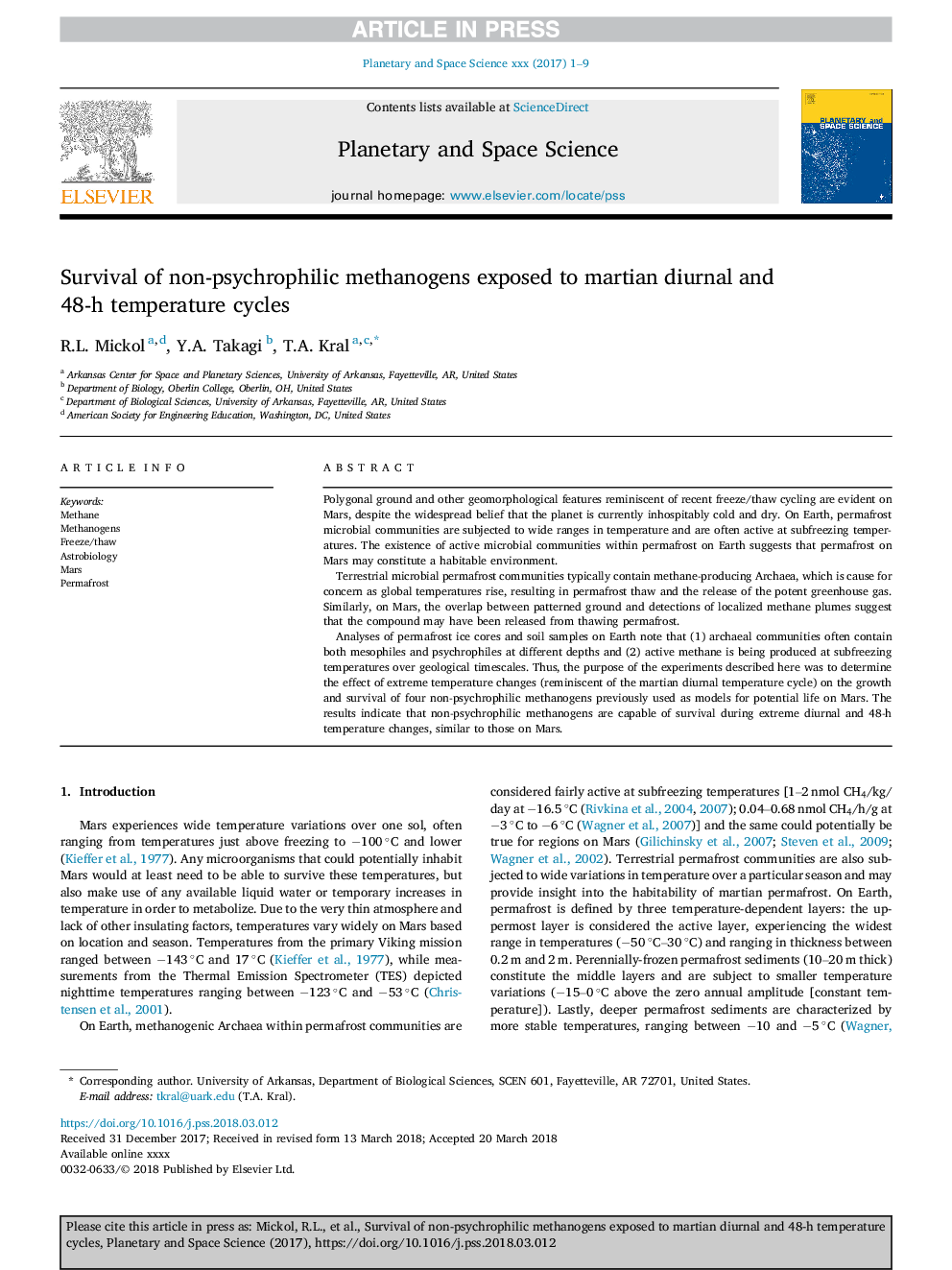| Article ID | Journal | Published Year | Pages | File Type |
|---|---|---|---|---|
| 8142139 | Planetary and Space Science | 2018 | 9 Pages |
Abstract
Analyses of permafrost ice cores and soil samples on Earth note that (1) archaeal communities often contain both mesophiles and psychrophiles at different depths and (2) active methane is being produced at subfreezing temperatures over geological timescales. Thus, the purpose of the experiments described here was to determine the effect of extreme temperature changes (reminiscent of the martian diurnal temperature cycle) on the growth and survival of four non-psychrophilic methanogens previously used as models for potential life on Mars. The results indicate that non-psychrophilic methanogens are capable of survival during extreme diurnal and 48-h temperature changes, similar to those on Mars.
Related Topics
Physical Sciences and Engineering
Earth and Planetary Sciences
Geophysics
Authors
R.L. Mickol, Y.A. Takagi, T.A. Kral,
